Rosemary is a perennial evergreen shrub often used in cooking. You can buy fresh or dried Rosemary at the grocery store and grow your own in the garden. Growing Rosemary from the seed takes time. It’s important to head start germination for several weeks before you want to transplant the herb outdoors. The trick with growing Rosemary from seed requires patience, as this plant grows slowly when propagated from seed.
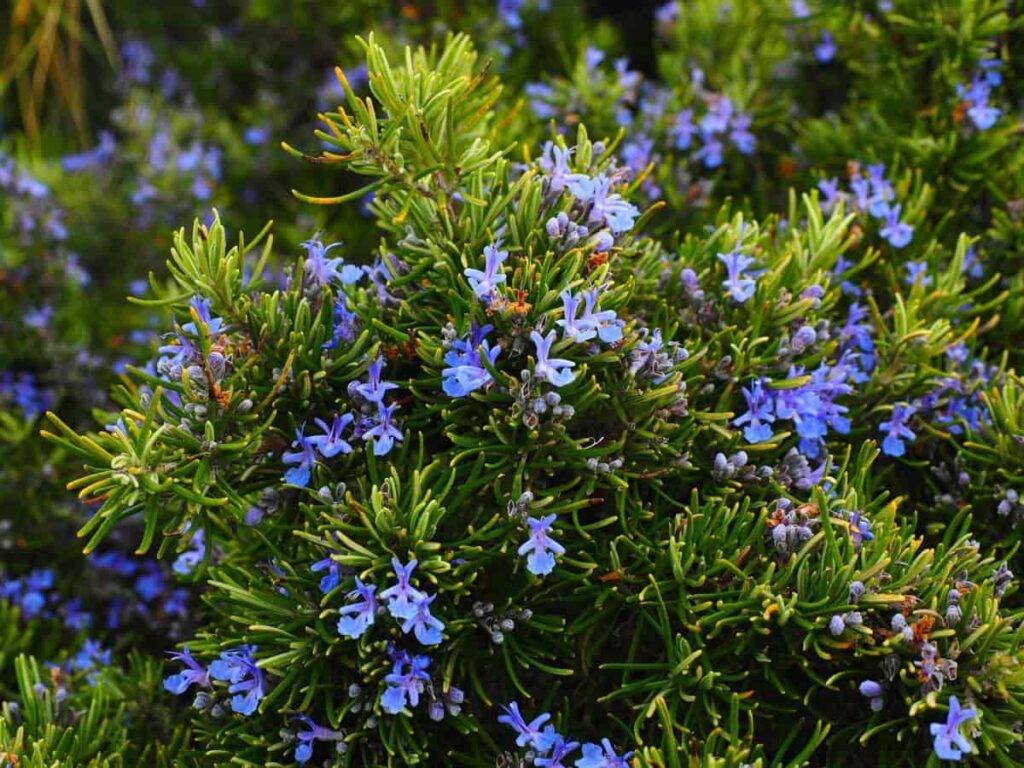
How to grow Rosemary from seed to harvest
How long does Rosemary take to grow from seed?
- You can start Rosemary from seed, but it is difficult, as germination rates are generally poor, and it takes several months for plants to produce any usable leaves. A combination of heat, light, moisture, and the right planting medium is essential to growing this herb successfully, and the maintenance of the Rosemary plant is easy.
- When growing Rosemary plants, please provide them with well-drained, sandy soil and at least six to eight hours of sunlight. Rosemary plants thrive well in warm, humid environments and cannot take extremely cold temperatures since Rosemary can’t withstand winter below 0°C. A new Rosemary plant takes about a year to reach its final position. However, it can be shortened to about six months if you grow Rosemary by cutting.
Germinating Rosemary seeds
Place the seeds on a well-drained base such as sand, vermiculite, or a very light potting mix. Cover the seeds with a little more mixture, and light water, and place the container in a warm place or on a heat mat. Under most conditions, your seeds should germinate in 14 to 25 days. Once your plants are exposed, remove the plastic and continue with intermittent light mistings. Rosemary appreciates humidity but looks for mold.
When should I germinate Rosemary seeds?
- You should start them three to six months before the growing season. The germination rate of Rosemary seeds is very low, so you should start planting more seeds than you expected. Plant Rosemary in the spring once all the possibilities of frost have passed. This delightful herb is a great option for raised garden beds, containers, and ground gardens.
- You should sow Rosemary indoors from late winter to early spring. Transplant or direct sowing begins in late spring once the soil is warmed. Starting indoors is more reliable. Use bottom heat to maintain a maximum soil temperature of 27 to 32°C.
In case you missed it: Growing Organic Rosemary in Containers, and Pots
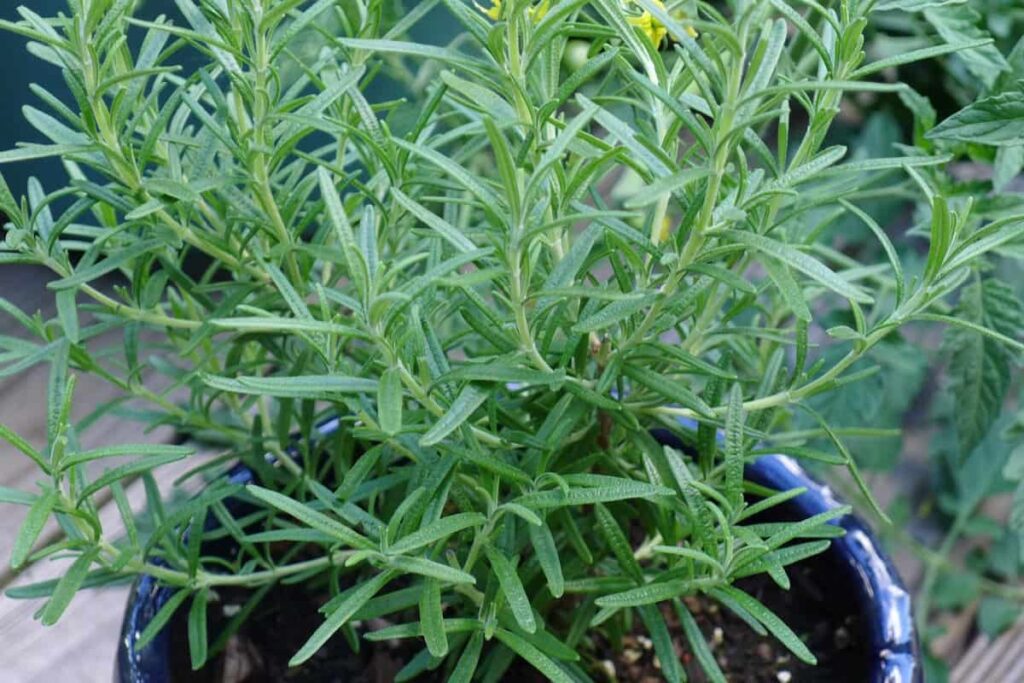
Why are my Rosemary seeds not growing?
Rosemary is not often growing due to the bounded roots of the pot, overwater, slowly drained soil, not enough sun, or lack of regular pruning. You should create the growing conditions of its native environment to ensure good growth for your Rosemary. To grow, the seeds must be kept moist, and the temperature must be kept constant at 22°C. Rosemary seeds take 15 to 25 days to grow under ideal conditions.
Water requirement for growing Rosemary
- You should only water it every two weeks. Ensure that the pot in which it is planted has proper drainage and that only water, when touching the upper layer of soil, feels dry. You should water newly planted Rosemary repeatedly for the first or two weeks to help set it up, but once it’s established, it needs very little watering other than rain.
- Water should usually be given once a week in summer and every two weeks in spring and autumn. Do not water Rosemary in the winter as it is dormant, and excess water increases the risk of root rot. It is equally important to drain the soil thoroughly to avoid root rot. Home-grown Rosemary plants must be watered at least 1 to 2 times per week. Rosemary may only need water in cooler homes with low light levels every week or two. A plant may need water every 2 to 3 days in warm homes with dry air.
Sun requirement for growing Rosemary
- Rosemary seeds require both heat and light to germinate, so it’s important to find a sunny location for the seeds. You should place the seed tray in a bright place with direct sunlight daily. Plant in full sunlight for best results. The planting site should have well-drained soil. Rosemary won’t tolerate being consistently wet. You should provide relatively fertile soil, slightly acidic at pH 6.0 to 7.0, and have a loamy consistency.
- Six hours of direct sunlight daily is the minimum for Rosemary. Rosemary can tolerate partial shade, but it’s usually not necessary. Without enough sunlight, Rosemary would struggle and become spindly. Rosemary is very hardy, but extreme sunshine and heat can damage it.
In case you missed it: How to Start a Terrace Garden From Scratch in Hyderabad: For Vegetables, Flowers, Herbs, and Fruits
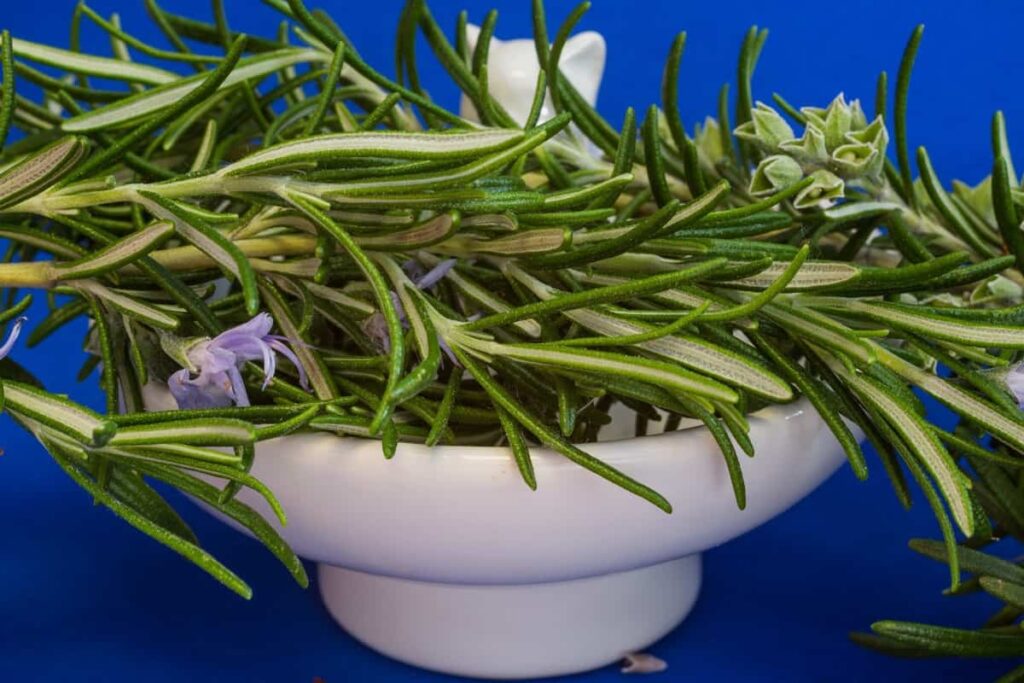
How to grow Rosemary from cuttings?
Dip the stem into growth hormone and put the plant in the potting soil. Keep the stem in a glass of water for a few weeks until the mature roots grow before planting. Rosemary cutting is the most common way to propagate Rosemary. Take 2- to 3-inch from a mature Rosemary plant to cut with a clean, sharp pair of shears. Rosemary cutting should be taken from soft or new wood on the plant.
Growing Rosemary from seed indoors
Rosemary is a large, bushy herb usually grown outdoors, but if you give special care and attention, potted plants can be grown indoors. If you plant outside, sow Rosemary seeds indoors about ten weeks before the last frost date in your area. Sow seeds 1/4 inch deep in the seed starting mixture. Keep the seed starting soil moist and use a heat mat to maintain the soil temperature around 22°C if necessary. It’s best to start growing Rosemary indoors. Meanwhile, Rosemary seeds are slow to germinate and grow; start them three to six months before the growing season.
Soil requirement for growing Rosemary
- Plant Rosemary in well-drained, loamy soil between six and seven pH. Although Rosemary will perform well in poor soils, adding fertilizer to the soil every spring helps its growth. In addition, you should ensure that you plant your Rosemary in well-drained soil after it is established; only water was used in times of severe drought.
- To grow Rosemary in pots, choose potting soil with a minimum of peat moss, which is acidic, as Rosemary likes alkaline pH. The surface should be dry between the watering, but the soil should never be completely dry.
- You can create the best potting soil for Rosemary by mixing two-thirds of compost and one-third of horticultural sand that recreates most of the soil conditions of Rosemary’s environment. Free-draining soil is essential, but Rosemary corresponds to virtually any soil other than wet or waterlogged. Rosemary prefers slightly drier soil. Wind conditions can endure but will require shelter from cold air.
In case you missed it: Growing Rosemary Hydroponically – A Full Guide
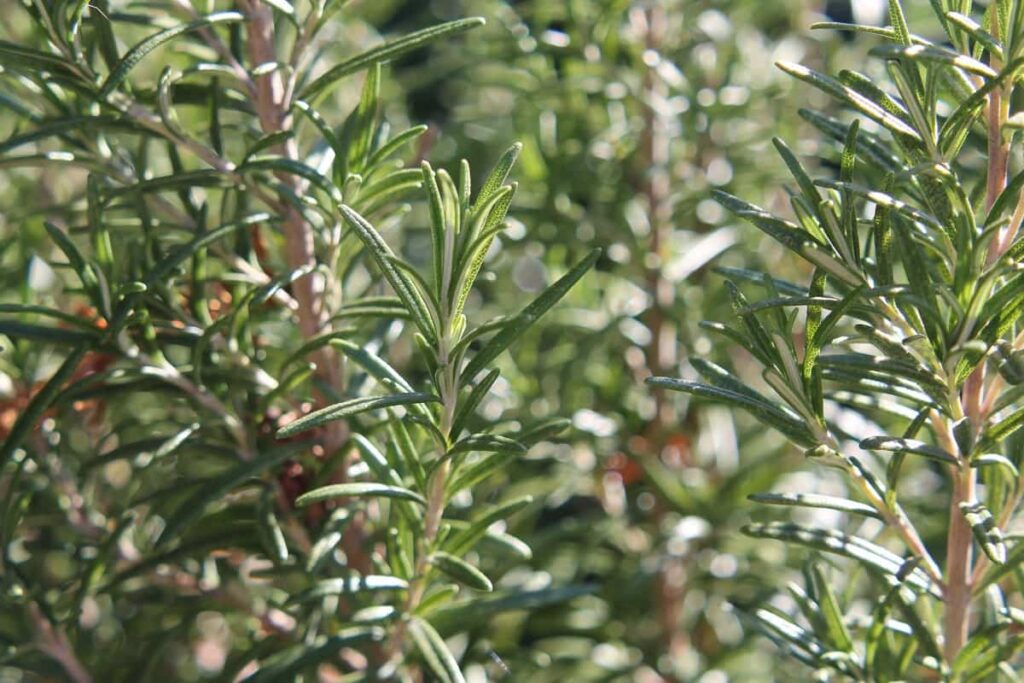
How deep should Rosemary be planted?
You should sow Rosemary seeds 1/4 to 1/2 inch deep. Space Rosemary plants are 18 to 36 inches apart. Growing Rosemary in pots with at least one drainage hole and 6 to 8 inches deep. It should contain high-quality potting soil that is loose, well-draining, and contains a slow-release fertilizer.
Where do you pinch Rosemary?
- The best way to pinch the Rosemary plant is to make it as close to the leaf nodes as possible. Pinching will boost the plant to grow two new stems under the pinch, which will help the herb grow complete and bushy because it will no longer divert its energy on growing taller.
- You can reduce the overall plant by one-third at a time if you want to reduce the size. Then you should wait two to three months, and you can cut again by a third. If you’re pruning Rosemary to create a busy plant, you can remove the end of the branches one to two inches.
- Repeated pinching can keep Rosemary in a manageable size during spring growth and provide you with plenty of herbs to cook. In addition, removing new tips during Rosemary pruning encourages branching, resulting in higher yields. Pruning works especially well when the plant is young, as it often results in more than one stem branching under each cut.
The best fertilizer for growing Rosemary
- Apply organic 20-20-20 non-acidic liquid fertilizers on your Rosemary every other week, preferably while the day temperature remains above 10°C. If you plan to grow Rosemary indoors, you’ll need at least 6 hours of light space each day.
- Rosemary doesn’t need fertilizer to thrive, but you can apply a top dressing of good-aged manure in the spring. If the leaf tips look dry and yellow after winter, fertilize once in the spring with a balanced 10-10-10 NPK fertilizer. Encourage spectacular growth by regularly feeding Rosemary with water-soluble plant foods. It is important to water regularly but make sure to let the soil dry between the water.
- Rosemary in pots doesn’t usually require fertilizer, but you can use a dry solution or water-soluble liquid fertilizer if the plant looks pale green or stops growth. Again, use maintenance, as too much fertilizer can damage the plant.
Growing Rosemary in pots
- If your garden doesn’t have space, doesn’t have a large outdoor garden, or doesn’t have a yard at all, Rosemary growing in containers is a great choice. Clay and terracotta pots measuring at least 12 inches are the best pots for growing Rosemary. Clay and terracotta are porous, allowing the soil to dry after watering; they do not warm so quickly in the sun compared to plastic or metal pots and provide more protection from frost in winter.
- Rosemary works well in containers in soil-based, peat-free compost. Water Rosemary plants well during the dry season and feeds them with common fertilizer during the growing season. Growing Rosemary roots in a pot with a diameter of at least 12 inches allow enough space to grow. Ensure the container has a drainage hole as Rosemary soggy, grown in containers, will rot in poorly drained soil.
In case you missed it: Growing Rosemary from Cuttings, Seeds, Planting, Care
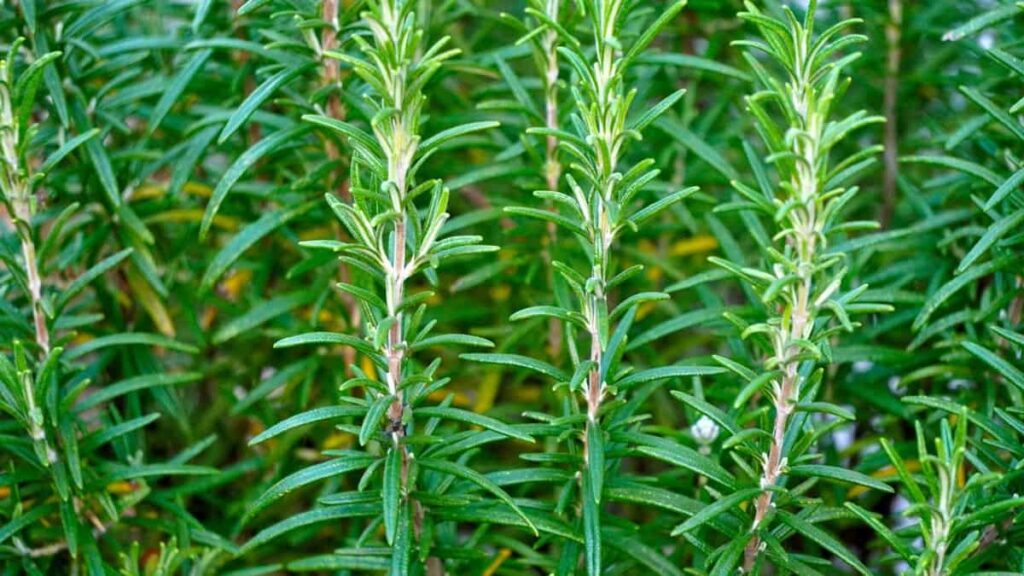
What can you not plant near Rosemary?
Planting Carrots, Potatoes, and Pumpkins near Rosemary is not recommended as they make for poor companions. Rosemary prefers dry soil and doesn’t work well with more water-needed plants like Tomatoes and Basil.
How do you winterize Rosemary?
- You should place the Rosemary plant where the temperature is above freezing but not too hot. A lightly heated garage or hallway is a good option, as hot indoor air can cause the plant to dry out. Rosemary likes a bit of moisture, so the gentle misting of the plants can help keep the air around it moist.
- Rosemary can be pruned for four to six weeks before the first frost at any time during spring or summer. After this time, or in autumn and winter, Rosemary may cause the bush to focus on new, tender growth rather than hardening off and protecting its growth. Rosemary is most vulnerable to fungal diseases during the winter when it turns brown due to low levels of sun and evaporation and the plant’s more dormant state.
Tips for harvesting Rosemary
- To harvest your Rosemary without killing the plant, use sharp pruners to remove the stems instead of pulling or tugging on the branches. Also, avoid removing more than 1/3 of the total size at a time, or it may not be recoverable. If you plan on growing Rosemary to dry, it’s best to wait until the plant bloom. Harvesting the leaves as soon as the flowers appear will give you the best taste and the most fragrant leaves.
- Harvest Rosemary by snipping sprigs with pruners or kitchen scissors. The new growth will be flexible and light green, while the old growth will be woody and deep. It’s okay to use either, but the new growth can be more aromatic and easier to cut.
What diseases and pests does Rosemary get?
| Disease | Symptom | Control |
| Root rot | Rosemary will limp, and terminal leaves and stems will die. | Dig up the plant, prune out infected roots, and dust with fungicide powder. |
| Powdery mildew | The disease is characterized by dusting whitish, fine spores on all parts of the plant. | A mixture of baking soda and water can help to prevent the fungus. |
In case you missed it: Growing Forget-Me-Not Plants: A Guide to Propagation, Planting, and Care for Beginners
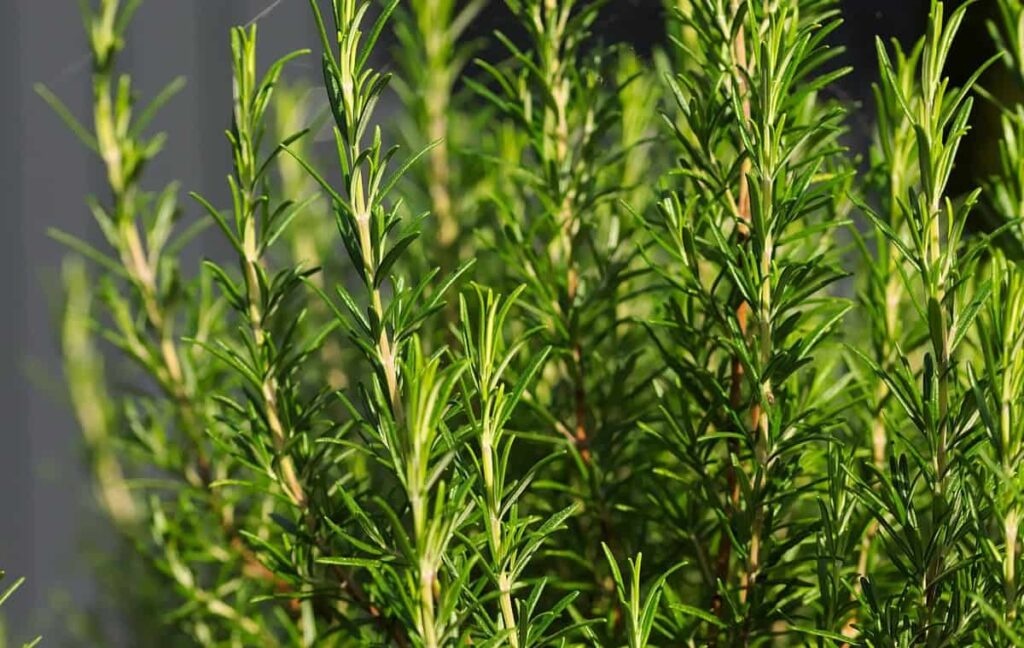
| Pest | Symptom | Control |
| Aphids | Aphid bugs are a concern because they suck the nutrients that Rosemary produces for itself, depriving it of nutrition. | The easiest way to naturally, get rid of aphids on Rosemary is to spray it every other day with a dependable pressure washer. |
| Spider mites | Spider mites suck plant juice, scrape chlorophyll and add toxins, resulting in white spots on the leaves. | You can use insecticidal soap to eliminate them. You can also mist your plant with cool water to eliminate spider mites. |
| Mealybugs | Mealybugs feed on the sap of Rosemary plants. | Neem oil is a powerful an insecticide that can help eliminate them. |
Conclusion
When growing Rosemary from seeds, it’s important to remember that it may take some time for the seeds to germinate. Growing any herb from the seed is a slower process than starting with a pre-existing one, but it will be very beneficial in the end. Under the right conditions, many herbs can grow indoors.
Rosemary is a perennial that can grow up to 30 years with a little care. Combined with its cooking values as an herb, you can consider this shrub essential for every herb garden. You can grow Rosemary outdoors in the garden, but it’s an interesting plant on the balcony, terrace, and even indoors.
- Flower Garden Designs and Layouts for Beginners
- Planting and Spacing Techniques in Papaya: A Beginner’s Guide
- Growing Gold: Essential Techniques for Planting Pineapples
- How to Make Kalanchoe Plant Bushy: Home Remedies and Solutions
- 11 Reasons Why Your Gardenia is Not Blooming: Home Remedies and Solutions
- Eco Elegance: The Guide to Designing a Drought-Tolerant Landscape
- Gardening on a Slope: Strategies for Hillside Landscaping
- Nourish and Flourish: Top Organic Mulches for Thriving House Plants
- Everything You Want to Know about Indian Mogra Flower: Discover Uses and Growing
- Green Thumb Success: Expert Tips for Cultivating Greenhouse Pumpkins All Year Round
- Maximize Growth & Flavor: The Ultimate Guide to Companion Planting in Herb Gardens
- How to Control Rhododendron Problems Naturally: Home Remedies and Organic Ways to Fix Them
- Natural Magic: The Remarkable Benefits of Cinnamon for Plants
- Best Steps to Revive Dying Tulip with Natural and Organic Treatment
- 10 Reasons Why Your Angel Trumpet is Not Blooming: Remedies and Treatment
- How to Fix Periwinkle Leaf and Flower-Related Problems: Natural Remedies and Solutions
- How to Fix Zinnias Leaf and Flower Problems: Discover Natural and Home Remedies
- Organic Steps to Induce Lemon Tree Flowers: A Comprehensive Guide
- Bloom Booster: Crafting the Perfect Homemade Bougainvillea Fertilizer
- Optimizing Growth: A Guide to Applying NPK Fertilizer for Potted Plants
- 10 Best Homemade Fertilizers for Rubber Plant: DIY Recipes and Application Method
- How to Boost Female Pumpkin Flowers: Effective Steps for More Flowers and High Yields
- Transform Your Indoor Garden: Top Benefits of Pink Salt for Houseplants
- 10 Best Homemade Fertilizers for Peacock Plants (Calathea): Easy DIY Guide
- Unlock Blooms: 9 Reasons Why Your Potted Chrysanthemum is Not Blooming
- 8 Reasons Why Your Potted Hibiscus is Not Blooming: Fix it with Simple Solutions
- Unlock Blooms: 9 Key Reasons Your Potted Frangipani Won’t Flower
- 10 Reasons Why Is My Ice Plant Not Blooming: Remedies and Treatment
- 10 Reasons Why My Potted Hydrangea Not Blooming: Treatment and Remedies
- 10 Reasons Why is My Wisteria Not Blooming: Remedies and Treatment
- 10 Reasons Why is My Goldfish Plant Not Blooming: Remedies and Treatment
- Maximize Your Space: Ultimate Guide to Balcony Gardening with Grow Bags
- 10 Reasons Why Your Iris is Not Blooming: Remedies and Treatment
- 10 Reasons Why Your Anthurium Plant is Not Blooming: Treatment and Remedies
- 10 Reasons Why Your Aquaponic Plants Are Not Flowering: Remedies and Treatment
- 10 Reasons Why Your Agapanthus is Not Flowering: Remedies and Treatment